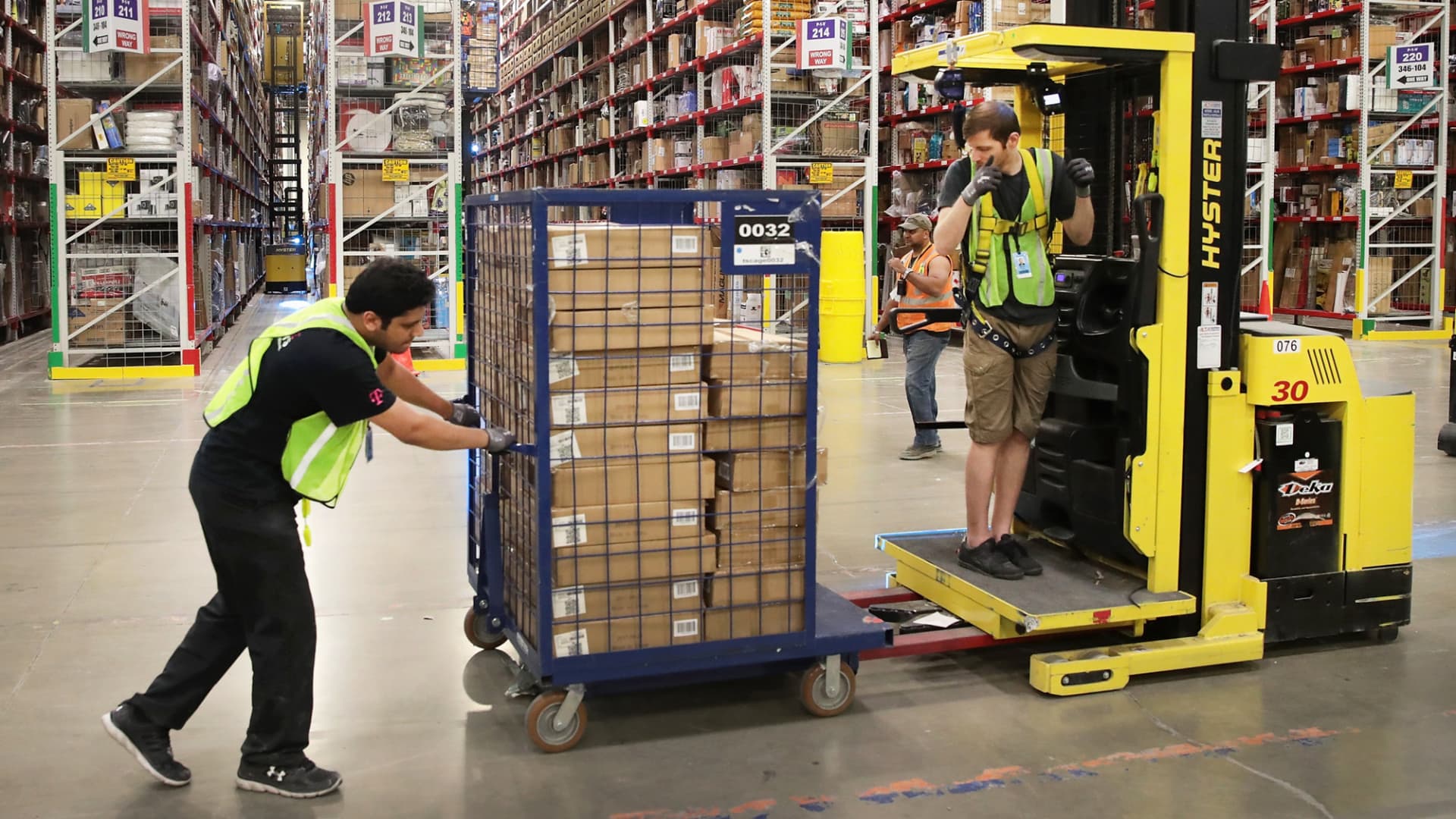Democratic Sen. Ed Markey, D-Mass., on Thursday introduced new legislation to regulate the use of productivity quotas by warehouse employers such as Amazon, a tool critics have said encourages employees to work faster and without frequent breaks, putting them at higher risk of injury.
The bill, called the Warehouse Worker Protection Act, is the first attempt to police warehouse quotas at the federal level. It comes after similar laws have passed in multiple states, including California, New York, Washington and Minnesota.
The legislation would require employers to be more transparent about workplace quotas and potential disciplinary consequences. Employers would also need to provide workers with at least two business days’ notice of any changes to quotas or workplace surveillance.
It also seeks to ban companies from using “harmful quotas” like “time off task,” an oft-scrutinized metric used by Amazon to measure the time a worker isn’t scanning items while on the clock. Employees have argued the time off task policy makes working conditions more strenuous and that it’s used as a tool to surveil workers.
“Amazon has perfected a punishing quota system that pushes workers to and beyond their physical limits,” Markey, a member of the Health, Education, Labor and Pensions Committee’s Subcommittee on Employment and Workplace Safety, said at a press conference announcing the bill.
“They set requirements for how many packages workers have to scan without telling workers what those requirements are. Then they fire workers who fail to win their impossible game,” Markey added.
Amazon’s use of quotas in its warehouse and delivery operations has been a frequent subject of debate alongside broader scrutiny of the safety of its frontline employees. The company — the second-largest private employer in the U.S. — has previously said it doesn’t use fixed quotas. Rather, the company said, it relies on “performance expectations” that factor in multiple indicators, such as how certain teams at a site are performing. It’s also disputed allegations that employees don’t get enough breaks.
Amazon has a “time logged in” policy that “assesses whether employees are actually working while they’re logged in at their station,” Amazon spokesperson Steve Kelly said. Kelly added that employees can check their performance anytime and that managers provide coaching to struggling workers.
Yet some Amazon warehouse workers say the company’s productivity quotas are opaque and often determined by algorithms, and that they face disciplinary action or termination for failing to meet them. The Occupational Safety and Health Administration announced in January 2023 that the agency issued citations against Amazon for exposing employees to safety hazards, pointing to its pace of work as a driving factor.
OSHA and the U.S. Attorney’s Office are investigating conditions at several warehouses, while the U.S. Department of Justice is examining whether Amazon underreports injuries. Amazon has said it disagrees with the DOJ and OSHA’s allegations.
Wendy Taylor, a packer at an Amazon warehouse in Missouri, said during Markey’s press conference on Thursday that she and others are “fighting for quota transparency.” Taylor said last March she was ordered back to work by onsite medical staff after she “tripped and fell flat on my face” over a pallet. Her doctor later found she’d torn her meniscus during the fall.
Taylor blamed Amazon’s “inhumane work rates” for the injury, adding, “Amazon workers provide same-day shipping, but we can’t even get the same-day care we deserve.”
WATCH: Amazon’s worker safety hazards come under fire from regulators and the DOJ













